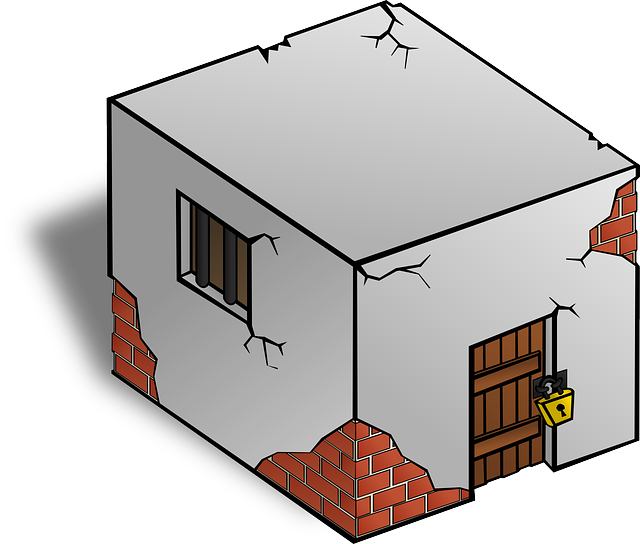Recidivism, or reoffending, is a significant societal issue, especially regarding ex-offenders' access to homeownership. Barriers like criminal records and financial difficulties hinder their transition to stable housing and independence. To break this cycle, Recidivism Reduction Strategies (RRS) are crucial. These initiatives focus on job support, financial literacy, and housing assistance, helping individuals reintegrate successfully while fostering homeownership and building assets. Homeownership offers a stake in the community, stability, and a valuable asset, reducing recidivism rates by promoting personal growth, trust rebuilding, and increased civic engagement, ultimately leading to safer, thriving neighborhoods.
Home ownership can be a powerful tool in breaking the cycle of recidivism, offering former inmates a fresh start and a protected asset. This article explores the intricate link between homeownership and recidivism reduction, delving into strategies that foster stability and prosperity for ex-offenders. We uncover how securing durable assets like homes can significantly lower repeat offenses, providing individuals with a sense of purpose and a foundation for successful reintegration into society. Understanding these strategies is key to implementing effective recidivism reduction tactics.
- Understanding Recidivism and Its Impact on Homeownership
- Strategies to Reduce Recidivism: A Focus on Asset Protection
- Long-Term Benefits of Home Ownership for Former Inmates
Understanding Recidivism and Its Impact on Homeownership

Recidivism, or the tendency for individuals to reoffend after serving their sentence, is a significant challenge in many societies, and it has notable implications for homeownership. In the context of housing, recidivists often face barriers to becoming homeowners due to a combination of factors: criminal records, limited financial resources, and societal stigma. These obstacles can create a cycle where past mistakes make it harder to achieve financial stability and secure permanent housing.
Addressing recidivism and its impact on homeownership is crucial through Recidivism Reduction Strategies. Programs that offer support in finding employment, providing financial literacy education, and assisting with housing acquisition can help break this cycle. By implementing these strategies, communities not only aid in reintegrating individuals into society but also contribute to the long-term goal of promoting homeownership and building assets for a more stable future.
Strategies to Reduce Recidivism: A Focus on Asset Protection

Home ownership can serve as a powerful tool in reducing recidivism by offering individuals and families a stake in their community and a tangible asset to protect. Strategies focused on asset protection, such as homeownership programs tailored for at-risk populations, provide a stable foundation for individuals reentering society after incarceration. These programs often include financial education, down payment assistance, and supportive services to ensure successful long-term homeownership.
By promoting homeownership, communities can foster stability and reduce the likelihood of recidivism. Homeowners are more likely to invest in their neighborhoods, become active citizens, and build generational wealth. This, in turn, strengthens community bonds and creates a positive cycle that discourages repeat criminal behavior, ultimately contributing to safer and more thriving communities.
Long-Term Benefits of Home Ownership for Former Inmates

For former inmates, home ownership presents a powerful tool for personal growth and long-term stability, offering a pathway to reintegrate into society while simultaneously bolstering their financial security. This asset becomes a tangible representation of their fresh start, fostering a sense of responsibility and pride. By assuming homeownership, individuals who were once incarcerated can demonstrate their ability to manage a significant financial commitment, which is crucial for rebuilding trust with lenders and neighbors alike.
Moreover, the stability afforded by owning a home can significantly reduce recidivism rates. Studies have shown that stable housing provides a robust foundation for former inmates to reconnect with their communities, access employment opportunities, and participate in support programs. This, in turn, increases their chances of staying out of prison and becoming productive members of society, contributing to the overall reduction of recidivism through effective second-chance strategies.
Homeownership offers a powerful tool in breaking the cycle of recidivism by providing individuals with a sense of stability and a protected asset. By implementing effective strategies to reduce recidivism, such as financial literacy programs and support systems, former inmates can gain control over their future. The long-term benefits of homeownership include improved credit scores, increased wealth accumulation, and a reduced risk of reoffending, ultimately fostering positive outcomes for individuals and communities alike. These efforts contribute to the broader goal of recidivism reduction strategies, ensuring a brighter and more secure future for those reentering society.






